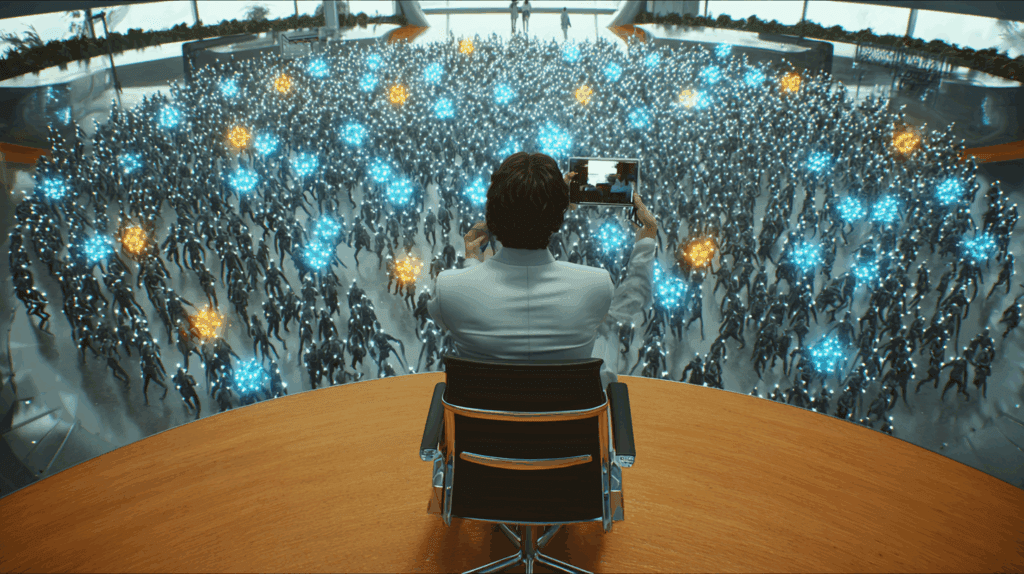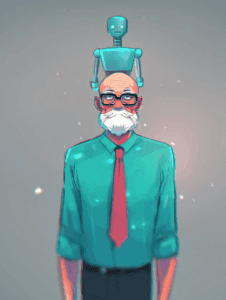The Message That Broke Silicon Valley’s Rules
Picture Marc Benioff, CEO of a 75,000-person company, staring at his phone in disbelief. The message from his support team wasn’t asking for help. Wasn’t reporting a crisis. It was asking for something else to do.
“Hey Marc, we’re not as busy as we were. What would you like us to do?”
When was the last time you heard of employees asking their CEO for more work because AI made their jobs… easier?
This is the story of how Salesforce accidentally discovered the future of work. Not by planning it. Not by forcing it. But by solving a problem so painful that 9,000 employees essentially volunteered to transform their careers.
And if you’re sitting there thinking “that would never happen at my company,” well, that’s exactly what Benioff thought too.
The Dirty Secret Every Tech Company Hides
Let’s be brutally honest about something nobody talks about at conferences.
You know that amazing support team you brag about? The one that “lives and breathes customer success”? They’re dying inside. Not metaphorically. Actually dying. One password reset at a time.
Salesforce had 9,000 support engineers. Brilliant people. Many with decades of experience. And 70% of their day was spent answering questions a well-trained parrot could handle.
Think about your day for a second. Now imagine this:
8:00 AM: You open your laptop to 47 versions of “I forgot my password”
10:30 AM: You’re explaining how to export data. For the 50th time. This week.
12:00 PM: Lunch at your desk because the queue never stops
3:00 PM: You realize you haven’t solved a single real problem today
6:00 PM: You drive home knowing tomorrow will be exactly the same
11:00 PM: You’re in bed, dreaming about password resets
That’s not an exaggeration. That’s literally what life looked like for thousands of Salesforce’s best and brightest.
Benioff knew this. Every tech CEO knows this. We just don’t talk about it because what’s the alternative? Hire more people to burn out? Let service quality tank? There was no Door #3.
Until AI kicked it open.
“Oh F*ck” – The Most Honest Thing a CEO Has Ever Said
Here’s where this story gets interesting. Because Benioff didn’t see AI as the solution at first. He saw it as the threat.
“Oh, f*ck, AI is going to take over the world,” he told Fortune magazine. Yes, that’s a real quote. From a real CEO. In a real interview.
But then something shifted. Instead of asking “How do we protect jobs from AI?” he asked a different question: “What if AI could do the jobs that are killing our people?”
Not replace the people. Replace the soul-crushing parts.
So in January 2024, while everyone else was having philosophical debates about AGI, Salesforce did something radically simple: they tested their own AI on their own worst problems.
No fancy codenames. No grand announcements. Just “let’s see if this thing can answer password reset tickets so our engineers don’t have to.”
The Experiment That Nobody Expected to Work
The first phase was almost embarrassingly simple. Take Agentforce. Point it at basic support tickets. See what happens.
What happened was this: Response times dropped from hours to seconds. First-contact resolution jumped from 62% to 83%. The AI was handling 750,000 requests on help.salesforce.com.
But here’s the plot twist nobody saw coming—the engineers weren’t threatened. They were thrilled.
For the first time in years, they had mental space. One engineer finally solved an integration problem that had been plaguing a Fortune 500 client for months. Not because they suddenly got smarter. But because they finally had the bandwidth to think.
The transformation must have felt surreal. Imagine going from this:
Before: Answer “How do I add a custom field?” → Copy standard response → Paste → Send → Repeat 100x
To this:
After: Deep dive into why a client’s API integration fails only on Tuesdays during full moons → Actually solve it → Feel like an engineer again
That’s not efficiency. That’s resurrection.
The Uprising Nobody Talks About
By summer 2024, something unprecedented started happening. Support engineers began approaching management. Not with complaints. Not with demands. With a question:
“What else can we do?”
Think about that. When in corporate history have workers approached leadership asking to be redeployed because technology made their jobs easier?
Benioff found himself planning to shift 1,000 to 4,000 of his 9,000 support engineers into sales development, business development, and strategic account management. Not because they weren’t needed. Because they were too valuable to waste on work a machine could do.
“Those support agents are coming to me saying, ‘Hey, you know, we’re not as busy as we were. What would you like us to do?'” Benioff explained on Fortune’s Leadership Next podcast. “We’re so busy at Salesforce we want to redeploy them.”
This wasn’t downsizing. This was upgrading humans.
The $50 Million Nobody Wants to Talk About
Here’s what makes CFOs sweat: Salesforce saved $50 million. Not by firing people. By promoting them.
Traditional automation math says: Reduce headcount → Save salaries → Pocket difference.
Salesforce math said: Elevate humans → Generate 10X more value → Reinvest in growth.
Those redeployed engineers? They helped drive $100 million in new annual order value in Agentforce’s first quarter. The company that was “saving money” by automating support ended up planning to hire 1,000 to 2,000 MORE salespeople.
Why? Because as Benioff discovered, “AI is doing 30% to 50% of the work at Salesforce now.” But instead of needing fewer humans, they needed more—just doing different things.
The Resistance That Never Happened (And Why You Should Care)
Every enterprise transformation faces resistance. Salesforce’s didn’t. Want to know why?
Because they did something radical: they told the truth.
From day one, the message was clear: “AI will transform your job, not take it.” But companies say that all the time. The difference? Salesforce proved it.
When the first support engineers saw their mundane tickets disappear and interesting problems appear, word spread. Fast. Engineers weren’t sharing horror stories in Slack. They were sharing wins.
“Finally solved the XYZ Corp integration issue!”
“Had lunch away from my desk for the first time in months.”
“Actually excited about Monday???”
The company invested heavily in change management. But not to convince people. To train them. To prepare them. To show them what was possible.
Think about someone with 20 years of muscle memory suddenly seeing an AI handle half their job. You’d expect panic. Instead, they realized it was handling the half they hated.
Your Playbook (If You Have the Guts to Use It)
Salesforce didn’t stumble onto something magical. They discovered a replicable framework. Here it is:
1. Start With Your Own Pain
Don’t inflict AI on customers first. Test it on your worst internal problems. Your employees are more forgiving and give better feedback.
2. Design for Elevation
Every AI implementation must answer: “What will humans do that’s MORE valuable?” If you can’t answer that, stop.
3. Make Transparency Your Superpower
Share everything. Metrics. Failures. Success. When employees see AI handling routine tasks, they stop fearing it and start leveraging it.
4. Invest More in Humans Than Tech
For every dollar on AI, spend more on helping humans adapt. Not because you should. Because it’s what works.
5. Create Pull, Not Push
When employees ASK to be transformed, you’ve won. Design experiences that make people want to change.
The Question That Should Keep You Up at Night
Salesforce is targeting 1 billion AI agents by end of 2025. Not to replace 1 billion humans. To elevate them.
“We’re really moving into a world now of managing humans and agents together,” Benioff said at Davos. “From this point forward…we will be managing not only human workers but also digital workers.”
But here’s what he’s really saying: What if your biggest competitive advantage isn’t reducing headcount but multiplying human potential?
The 9,000 Salesforce engineers who asked for new challenges aren’t victims of automation. They’re pioneers of augmentation. They chose transformation over stagnation. They asked to be replaced in tasks that never deserved their talent in the first place.
So here’s my question to you:
What would happen at your company if AI handled all the soul-crushing work tomorrow? Would your employees panic? Or would they, like Salesforce’s team, ask “What meaningful work can we do now?”
Because if you’re still thinking about AI as a way to need fewer humans, you’re playing last century’s game. The winners will be those who use AI to need more humans—just doing work that actually matters.
The support engineers texting their CEO for new challenges? That’s not the future of work.
That’s the present.
You’re just not there yet.
What soul-crushing work is your team doing that AI should handle instead? What would they build if they had the time? Drop a comment below—the most honest answer wins.

